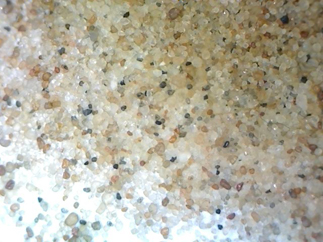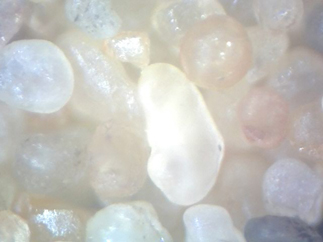
- Silica Foundry Grade (50 GFN)
- Silica MSDS Sheets
Email:
SNolan@FoundrySands.com


Silica sand (HSR or high silica round) is mined from sandstone deposits and is extremely high in silica content. This higher silica content means these sands are more chemically inert and thermally stable than lake sands. This is important for resin coated sand systems and core making. This is the type of sand that we are offering.
Round grain sands have better flowability than do other sand shapes. Because they have less surface area per unit volume, round grains require less resin binder (or clay / sodium silicate) to coat. Round grain sands also pack more efficiently and their molded density is usually higher than that of angular or sub angular grains.
Conversely, angular sands have more unit area per unit volume, so they require more bonding material to coat. Angular sands generally have a rougher surface than round grain sands. Although the angular shape does give the sand a high interlocking strength between grains, the many sharp edges and corners tend to break off, creating fines in the sand system. This in turn creates higher binder usage.
In the selection of foundry sand, thermal expansion, or how the sand grains expand when they are heated, may also be an important consideration. Thermal expansion affects not only casting dimensions, but can create other casting defects. In thermal expansion, the high silica round sand is superior to the lake sands.
Thermal expansion is the result of a “phase transformation “of the silica. This expansion is sometimes referred to as the “alpha-beta transformation”, alpha-quartz transforming into beta-quartz. This “stabilizing” transition occurs at 1,064 degrees Fahrenheit (573 Celsius). It is important to note that all of the silica sand that we process will go through a thermal reclamation system that will operate at ~1,400 degrees (760 Celsius). Every grain of sand that we produce will be thermally stabilized.
|
|
|||||||||||||||||||||||||||||||||||||||||||||||||||||||||||||||||||||||||||||||||||||||||||||||||

